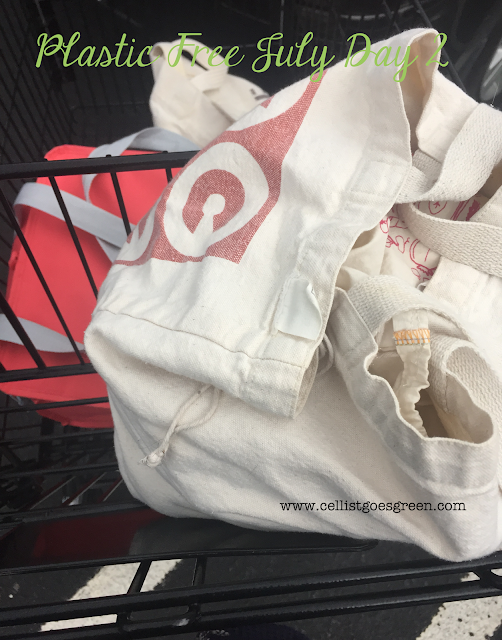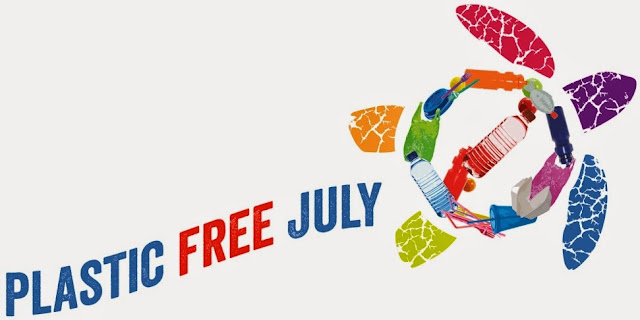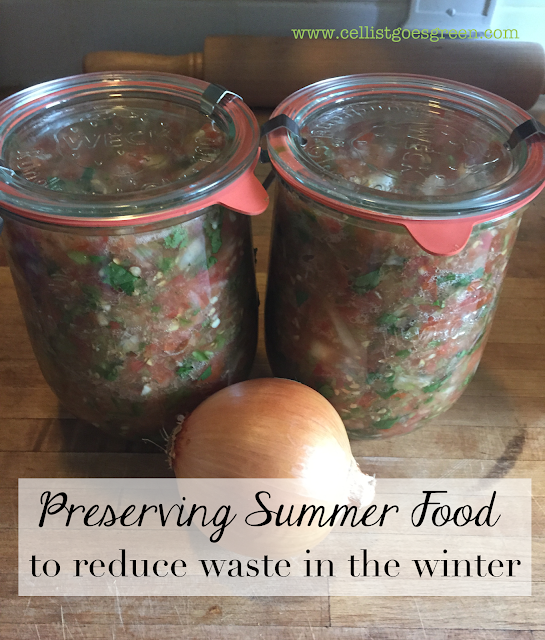It is quickly approaching my favorite time of year again--
Plastic Free July!
If you don't know what
Plastic Free July is, it's a challenge to stop using disposable plastic for the entire month of July.
This will be my fourth Plastic Free July (but now I have Plastic Free Augusts, and Septembers, and...). In 2013, I took the challenge for the
first time. From there, I was hooked, and I felt so much better and my life felt simpler for having removed so many of the disposable products from our life.
So, I encourage everyone to give it a try! You don't need to be perfect. You don't have to find a solution for everything all at once. But you might be surprised how much disposable plastic waste you are actually able to reduce!
Register here to participate!
Some suggestions to get started:
EASY
1. Bring your own bag. (Try to use ones made out of natural fibers. If you don't have any,
EcoBags makes some nice ones made out of organic or recycled cotton, and Life Without Plastic
has a portable one that folds up).
2. Bring your own water bottle (glass or stainless).
3. Say no to straws--ask for "no straw, please!" when you eat out or go to a bar.
4. Use a French press or a
Chemex to make coffee--it will taste better (and is cheaper!) than disposable coffee pods, anyway.
5. Bring your own mug or mason jar for coffee or tea out.
6. Bring your
own utensils.
NEXT STEPS
FOOD
1. Bring your own cloth bags and
shop the bulk bins in your local store. Bring your own container for meat and cheese.
2. Shop the farmers market!
3. Buy milk in returnable glass bottles.
4. Find ways to make kitchen staples instead of buying them in a plastic lined tin. Try soaking and cooking dried beans (it's really easy, I promise!), make your own yogurt, tomato sauce, salad dressing, etc. Even try just one of those things.
5. Use glass storage containers in the kitchen. Mason jars work, so do old pasta sauce jars. Take a look in your local thrift store.
5. Compost!
BATH
1. Replace your bottles of shampoo and conditioner with a
shampoo bar.
2. Use bar soap instead of body wash. Look for a soap with natural ingredients.
3. Use coconut oil instead of lotion.
4. Find toilet paper wrapped in paper instead of plastic. In the U.S., Seventh Generation makes some.
5. Shave with a
safety razor.
6. Use a
bamboo toothbrush.
7. Make your own
deodorant.
HOUSEHOLD
1. Use vinegar, baking soda and bar soap to clean.
2. Soap nuts to do laundry. Try dryer balls instead of fabric softener.
3. Use
bar soap to wash dishes.
4. Make your own
dishwasher detergent.
A small (but important) note: Before buying something new, see if you can find something you already have or check your local thrift store. It is a balancing act--it is important to not contribute to the massive amount of "stuff" that already exists, but it is also important to support small businesses who are doing the right thing and producing long-lasting products in a sustainable way!
Note: This post contains affiliate links to Life Without Plastic, a company whose mission and products I fully support.
















